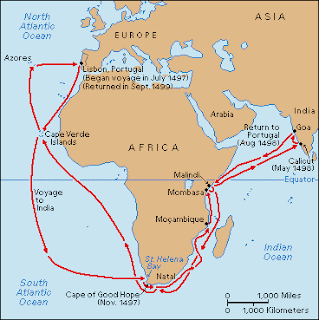
Then, after a week or so, the natives grew restless and wanted to know when the Europeans were going to leave. The First Example of African NationalismĬarefully following in his predecessor’s footsteps, Vasco Da Gama rounded the Cape without major incident and, five months after leaving home, he found himself on the Southern Cape Coast, talking business with some natives.Īt first, the gathering was friendly trading was amicable, there was music and dancing and all seemed to bode well. Nevertheless, Portuguese expectations for Da Gama’s expedition were high. The captain’s name was Vasco Da Gama and, as he sailed away from Portugal, he knew the pressure was on.Ĭolumbus had already found his way to Central America in 1492, and the Spanish were busy exploiting the New World as fast as they could. In 1524, he was appointed Governor of India.It took some time to set things up, however, and it was only ten years later, in July 1497, that a new captain set off with a small fleet of ships, designed with the help of Dias himself. Indian spices boosted the economy of Portugal. This opened a new chapter in the Indian trade relation with Europe. The discovery of the sea route to India is considered as a milestone in world history. He sailed from Lisbon in Portugal via Cape of Good Hope. Vasc-da-Gama came to India in the present day Kerala. These necessities forced King Manuel I to send an expedition to search a sea route for India. Land route was long and also under the influence of the Muslims. Other eastern nations were also trading with India. At that time, Muslims had a monopoly of trade with India. Indian spices were famous all over the world. This was mainly from the trading point of view. In 1497,King Manuel I sent a Portuguese expedition to India under Vasco-da-Gama in search of a maritime route from Western Europe to the East.

He is credited for the discovery of the sea route to India from Europe. Vasco-da-Gama was a very successful Portuguese sailor.


He came to India through Cape of Good Hope. He discovered the route in the end of the fifteenth century. In fact, he was the person who discovered the sea route to India from Europe.

He was the first European to reach India by sea. Hint: Vaso-da-Gama was a Portuguese explorer.


 0 kommentar(er)
0 kommentar(er)
